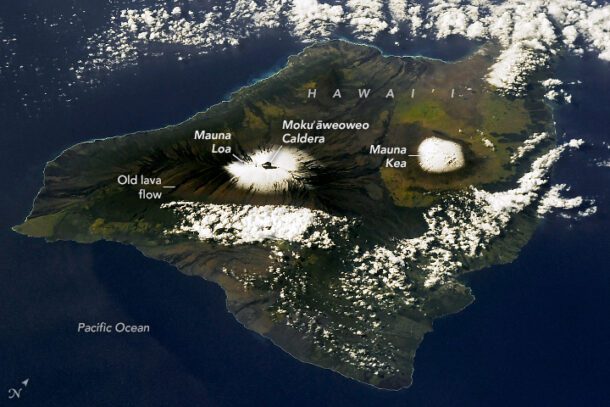
An astronaut aboard the International Space Station (ISS) photographed the island of Hawai’i and its snowcapped volcanoes Mauna Loa and Mauna Kea. The photograph was taken on Dec. 20, 2022, after a winter storm dropped snow over Mauna Kea and the recently erupted Mauna Loa.
This eruption—the first since 1984—started on Nov. 27, 2022, and lasted until around Dec. 10, 2022. It produced a lava flow that extended up to 12 miles (19 kilometers) from the vent, some of which is likely visible in this image. Most of the lava, however, is from past eruptions that produced more extensive flows.
The 2022 eruption began with lava spewing out of a fissure in Moku’āweoweo, the summit caldera of Mauna Loa. Then, lava from three fissures in the Northeast Rift Zone fountained to heights between 100 to 200 feet (30 to 60 meters). Later in the eruption, lava flowed from two fissures down the volcano at 0.08 miles per hour (130 meters per hour). Temperatures within the lava flow field on Mauna Loa have taken months to cool, according to U.S. Geological Survey status reports.
Image Credit: ISS Crew Earth Observations Facility and the Earth Science and Remote Sensing Unit, Johnson Space Center

